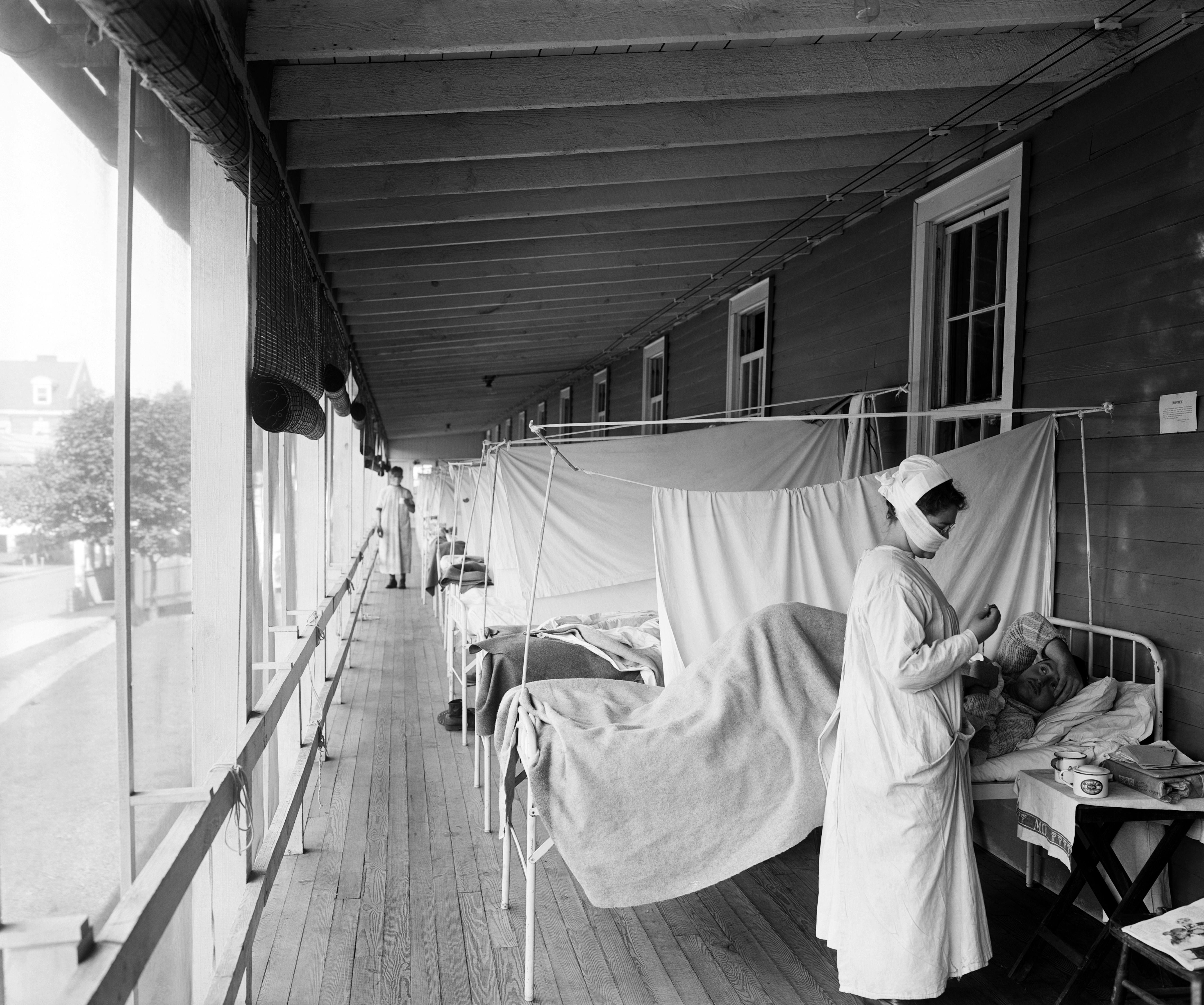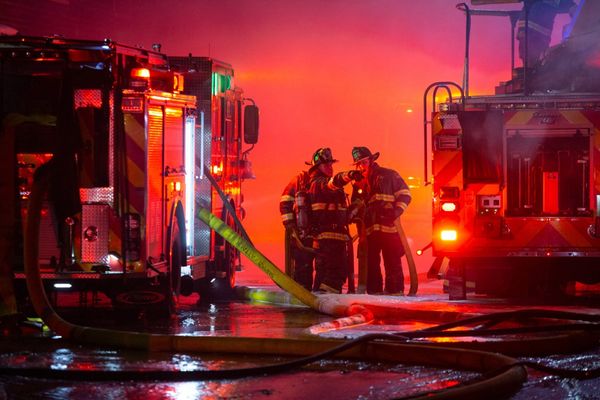
The seasonal flu may be a direct descendant of the 1918 pandemic and not the result of multiple viruses combining, new research shows.
Just as the human genome over millennia can tell us crucial information about where, when, and how our species evolved, genomic changes in a virus can tell us about the progression of illness outbreaks and pandemics.
The 1918 pandemic is estimated to have killed between 50 and 100 million people worldwide. Unlike our current pandemic, many of the questions about the 1918 pandemic remained a mystery due to technological limitations. Notably, virologists couldn’t be sure if the seasonal H1N1 flu is a direct descendent of the 1918 pandemic or an intra-subtype reassortment. In other words, one of the biggest questions medical historians have about the 1918 pandemic is if the modern seasonal flu is a great-grandchild of the influenza virus that caused the 1918 pandemic, or a distant cousin.
New research, published today in Nature Communications, suggests the seasonal flu is a direct descendent of the 1918 flu. This had been a mystery because, at the time, scientists hadn’t yet discovered flu viruses, much less have the capability to sequence a virus’s genome. It wasn’t until the late 1990s that researchers were able to use permafrost preserved bodies to determine that the 1918 pandemic was indeed Influenza A virus of the H1N1 subtype.
The background — Using new technology, researchers Sébastien Calvignac-Spencer and his colleagues at the Robert Koch Institute in Berlin, Germany were able to determine both how closely related the modern seasonal flu is to the 1918 virus as well as how the virus mutated throughout the 1918 pandemic.
Calvignac-Spencer tells Inverse the value of using new technology to understand the viral evolution of past pandemics.
“These kinds of tools allow us to reconstruct how viruses have emerged, spread, and adapted during a pandemic. Identifying those things that differ or are similar across pandemics will help us better prepare for the next catastrophic event,” he says.
What they did — The researchers genetically sequenced viruses taken from 13 lung samples from people who died of the flu between 1901 and 1931. The lungs had been stored in museums in Berlin and Vienna, Austria. Three of the samples were taken from people who died in 1918.
Calvignac-Spencer says, “We have built on a strategy that has become very popular during the last decade, well beyond the field of infectious diseases, which consists [of] sequencing all RNA molecules in a given sample,” he explains, “Because pathology specimens are usually formalin-fixed [a water based-solution of formaldehyde gas], this results in blocking part of the RNA molecules by linking them to other macromolecules. We tweaked [this] by adding a step where we literally boil the sample — this step frees some of the blocked RNA.”

Ultimately, the researchers were able to sequence one full and two partial genomes. Particularly interesting to Calvignac-Spencer was the virus evolved in a way that could evade the immune system’s defenses. In other words, the virus likely evolved to evade human immune defenses. Specifically, the immune system sends interferons to attack a virus it’s been exposed to by recognizing the virus’s nucleoprotein. Calvignac-Spencer and his colleagues found two sites in the nucleoprotein that changed between the first and second waves of the pandemic. Changing that nucleoprotein would confuse the system, making reinfection possible, and contributing to a second wave.
“Of course, we still only have very few genomes but that is an interesting avenue for further investigation,” he says.
Finally, the researchers used a technique called a “molecular clock model”— to assess changes to the virus’s genome over time. According to Pennsylvania State University, “evolutionary biologists can use this information to deduce how species evolve, and to fix the date when two species diverged on the evolutionary timeline.”
This method allowed the researchers to see that the initial strain of the flu evolved on its own in humans, birds, and other mammals, as opposed to becoming a recombinant virus in which parts of genomes of different viruses combine to become its own virus, as some had posited the flu had done.
Instead, the researchers determined that what we experience as the seasonal flu is indeed a direct descendant of that 1918 flu virus. Fortunately for us, it’s a much weaker version, and one our immune systems have some experience combatting.
What can this tell us about our current Covid-19 pandemic?— “Studying past pandemics makes it possible to identify similarities and differences that inform us about what a pandemic can look like. There are parallels and differences between the 1918 flu and the current pandemic,” Calvignac-Spencer says. “For example, they have both occurred in waves. Yet, while different waves of the Covid pandemic have often been driven by the spread of new variants, we don’t see such lineage replacement in 1918.”
The long-term objective is to build a more robust understanding of pandemics, he says. Instead of using this 1918 pandemic to understand the current one, he is more interested in using the current pandemic to better understand the 1918 pandemic, and pandemics generally.
What’s Next — Calvignac-Spencer says “a major limitation of our work and this kind of research really is the limited number of specimens/genomes we can play with. Just imagine trying to reconstruct the COVID pandemic with 20 genomes, rather than the >10M we have collectively generated.”
If we had as little data for the current pandemic as we do for the 1918 pandemic, we would miss entire variants and phases of the pandemic. So Calvignac-Spencer is concerned with broadening the genomic data for the 1918 pandemic as much as possible.
“We work hard on finding new specimens for the 1918 pandemic. It is very difficult even though the field is very collaborative (many labs work hand in hand) and museums are very much willing to support this research,” he says. “We also already started to extend our scope to the subsequent flu pandemics in 1957-58 and 1968-69. With some extreme luck, we might also find specimens from earlier pandemics, like the now-famous Russian flu of 1889/90, whose causative agent may have been flu or one of the now endemic human coronaviruses (OC43).”
Ultimately, building a genomic history of past pandemics may help us better anticipate, understand, and prepare for future pandemics.







